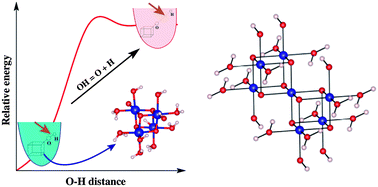The role of an oxometallic complex in OH dissociation during water oxidation: a microscopic insight from DFT study†
Abstract
The uncatalyzed atomic dissociation of

* Corresponding authors
a
S. N. Bose National Centre for Basic Sciences, Kolkata 700098, India
E-mail:
tanusri@bose.res.in
b Indian Institute of Science Education and Research, Pune 411008, India
c Department of Chemistry and Chemical Biology, Rutgers University, Piscataway, New Jersey 08854, USA
The uncatalyzed atomic dissociation of

 Please wait while we load your content...
Something went wrong. Try again?
Please wait while we load your content...
Something went wrong. Try again?
S. Sarkar, M. Kabir, M. Greenblatt and T. Saha-Dasgupta, J. Mater. Chem. A, 2013, 1, 10422 DOI: 10.1039/C3TA12074K
To request permission to reproduce material from this article, please go to the Copyright Clearance Center request page.
If you are an author contributing to an RSC publication, you do not need to request permission provided correct acknowledgement is given.
If you are the author of this article, you do not need to request permission to reproduce figures and diagrams provided correct acknowledgement is given. If you want to reproduce the whole article in a third-party publication (excluding your thesis/dissertation for which permission is not required) please go to the Copyright Clearance Center request page.
Read more about how to correctly acknowledge RSC content.
 Fetching data from CrossRef.
Fetching data from CrossRef.
This may take some time to load.
Loading related content
